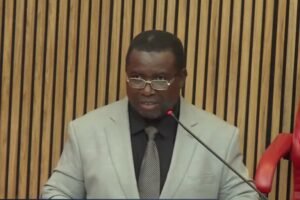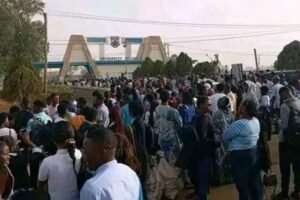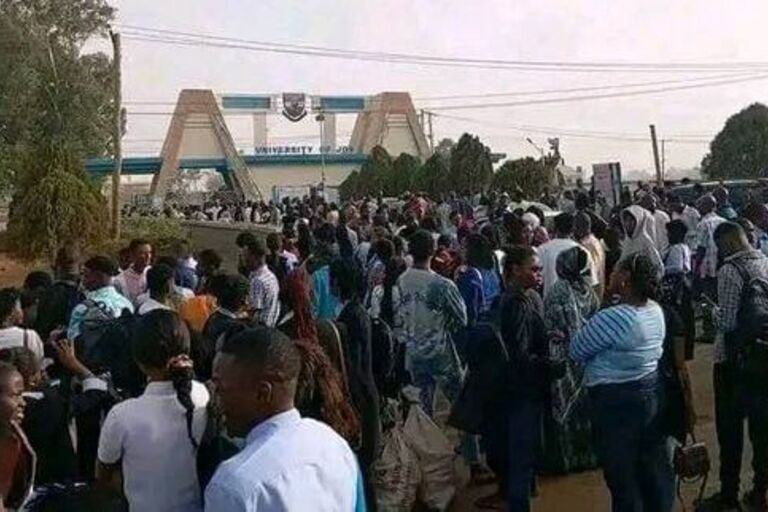The tropical storm On Sunday, Hurricane Hilary blasted torrential flash floods east and west of Los Angeles, marking the system’s historic arrival in California after barreling across Mexico’s Baja California Peninsula with catastrophic intensity.
One person was killed in Mexico amid reports of flash floods on the peninsula, where several roads were washed away and photographs on social media showed wild torrents spilling down city streets that had become rivers.
In an area more accustomed to drought, California Governor Gavin Newsom announced a state of emergency for parts of Southern California, with flash flood warnings in force until at least 3 a.m. (1000 GMT) on Monday.
Forecasters predict that mountain and desert areas will receive 5 to 10 inches (12 to 25 cm) of rain, which is as much as the deserts regularly receive in a year.
The first tropical storm to hit Los Angeles County since 1939 caused severe flooding in the San Gabriel Mountains east of the city and coastal regions in Ventura County to the northwest.
San Bernardino County ordered the evacuation of many villages in the mountains and valleys after photographs on social media revealed torrents of water, dirt, rock, and trees.
Rain swept trees and muck down a slope at Sheep Canyon near Wrightwood, California, about 70 miles (112 km) northeast of Los Angeles. Gushing floodwaters swept trees, dirt, and debris into the air at Oak Glen, one of five San Bernardino County municipalities under evacuation orders.
The National Weather Service warned of life-threatening floods in more populous Ventura County to the west, where up to 2 inches (5 cm) of rain fell in two hours. The weather service reported automobiles trapped in Spanish Hills, where firemen performed swift water rescues.
On a tour of Southern California, Newsom said Palm Springs, a desert getaway in Riverside County about 100 miles (160 kilometres) east of Los Angeles, was dry when he left on Sunday, but an hour later it had received “the most significant rainfall over a 60-minute period any time in the history of Palm Springs.” The streets quickly became inundated.
“That’s how fast this system moves. “Take nothing for granted,” Newsom urged at a press conference in Los Angeles after updating US President Joe Biden, who had directed government agencies to transfer personnel and supplies to the region.
Residents expressed shocks
The storm surprised residents in Rancho Mirage as water and debris flowed across blocked roads, stranding at least one pickup truck in water nearly to the top of its bed.
“It’s incredible. “I’ve never seen anything like this,” Rancho Mirage resident Sean Julian, 54, said. “I’m seeing a lot more downed trees.” And there’s a large tree over there that just collapsed, and I definitely shouldn’t be out here.”
“We’ve had storms before,” DJ Hilton of neighbouring Cathedral City remarked, “but never anything quite this windy and rainy at the same time.”
The meteorological service said that Hilary was 105 miles (170 km) northwest of San Diego at 8 p.m. PDT (0300 GMT), with winds of 45 mph (75 kph) and heading north-northwest.
Hundreds of flights were cancelled in San Diego, Las Vegas, and Los Angeles, and major sporting events were postponed. The two largest school systems in the state, Los Angeles Unified School District and San Diego Unified School District, have cancelled classes for Monday. Southern California’s beaches were battered by dangerous waves.
Floodwaters rushed through the concrete banks of the Los Angeles River, which is usually just a trickle. Rock falls pushed boulders down on Interstate 8 at Ocotillo, a desert hamlet about 90 miles east of San Diego, causing traffic delays all the way to Arizona.
According to the country’s army, Hurricane Hilary made landfall earlier on Sunday in the northern section of Mexico’s Baja California Peninsula, where over 1,900 people were evacuated to shelters.
The storm was especially hazardous in low-income neighbourhoods, where many homes do not fulfil building requirements.
“We’ve always known it’s a risky area.” There is a lot of water around, but what are we going to do? “It’s the only place we have,” Yolanda Contreras, who lives in a flood-prone region of Rosarito, some 15 miles south of the US-Mexico border, said.










